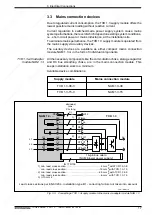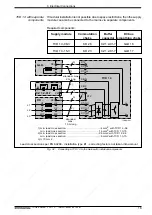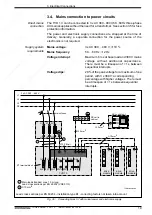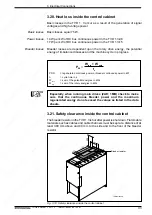
30
• DOK-POWER*-TVD*1.3****-ANW1-EN-E1,44 • 02.97
3. Electrical Connections
3.17. Residual current operated devices
A current circuit breaker (fuse or power circuit breaker) should preferrably be
used to switch power off in the event of a short-circuit to the housing (ground).
If TT systems absolutely necessitate a residual current operated device
because of the size of the grounding resistance, then the following must be
taken into account.
In the case of switched-mode drive controllers, capacitive leakage currents
always flow to ground.
The degree of the leakage current depends on
• the number of drive controllers used,
• the length of the motor power cable and
• the grounding conditions on site.
The leakage current inevitably rises if steps are taken to improve the
electromagnetic compatibility of the machine (mains filter or shielded
conductors). Do not use residual current operated devices with leakage
currents of less than 0.3A!
False tripping can occur when switching inductances and
capacitances on (rf interference supression filters, transformers,
contactors and magnetic valves).
Warning!
Commercial pulse-sensitive residual current operated devices (unit
designation ) do not guarantee that electronic equipment
with a three-phase bridge circuit (B6 circuit) is sufficiently protected.
The protection of the electrical equipment connected to such devices
together with equipment with B6 circuits can be impaired.
~
_
∩
_
∩
_
Either residual current operated devices which switch off also with DC-
leakage current should be used, or an isolation transformer should be placed
in the mains supply line.
If isolation transformers are used, then the overcurrent protective devices
must be tuned to the impedance of the ground fault loop so that there is an
immediate tripping in the event of a fault. Connect the star point of the
secondary windings to the protective conductor of the machine.
















































